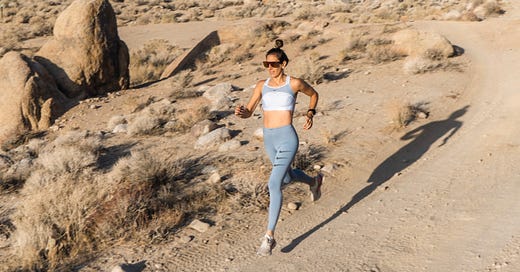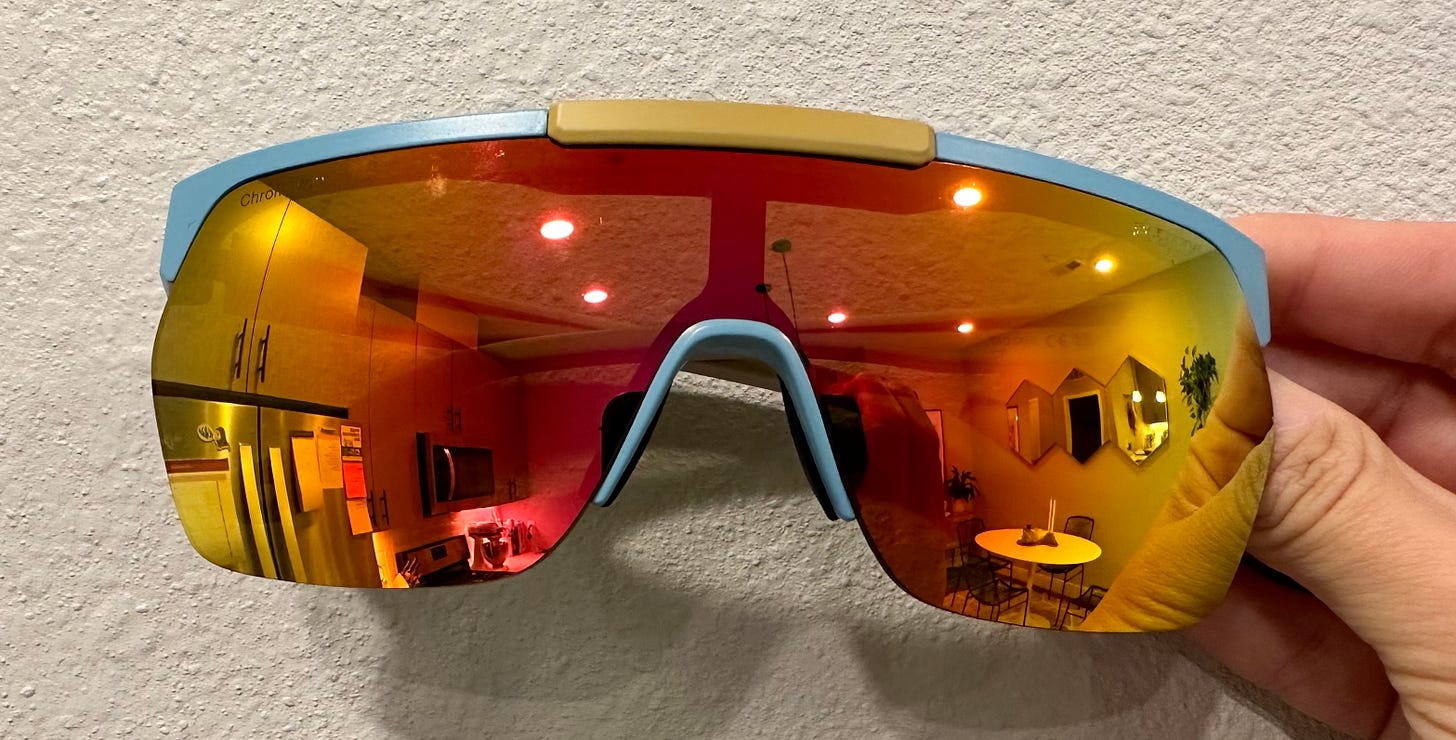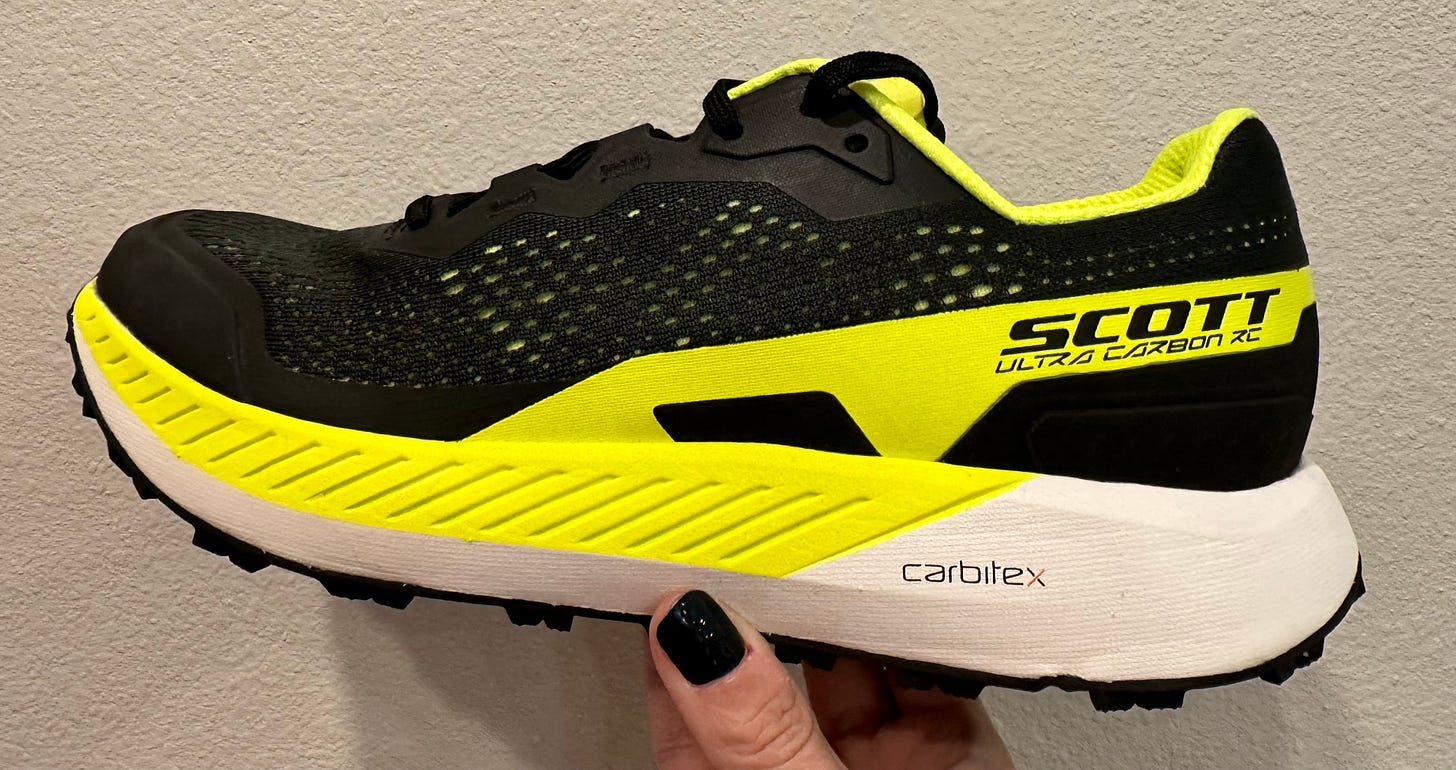It’s Cold Out…Are You Heat Training?
Subjecting yourself to hot temps year-round can make you faster come race day.
The Speed Project is a 340-mile race from Los Angeles to Las Vegas, where temperatures in Death Valley reach triple digits even at the end of March. Training through the winter in Denver, CO—which has already been subjected to several bitter cold arctic fronts this year—isn’t exactly conducive to heat acclimation.
To prepare for this year’s event, Lexi Veara purchased a sauna suit and a portable at-home sauna. “I don’t really feel like I run well in the heat, so I knew I wanted to heat train and these options seemed easier than, like, putting a bike trainer in my bathroom,” she explained. (People do do that. I’m just not sure if it’s effective.)
For the first 10 days after her portable sauna arrived, Veara committed to sitting in 125- to 135-degree temperatures for 30 minutes at a time. “It feels good, like it’s doing something,” she said, “but it also feels really terrible at the same time because it is just so uncomfortable.”
There’s a mental benefit to that: “I feel like I’m training my mind to not be like, oh, it’s time to get out at minute seven,” said Veara, an approach that will pay off as the miles rack up in the desert (or at mile 17 of a marathon). But there are also physical benefits to sitting in what essentially amounts to a hot plastic box—or subjecting yourself to other artificial methods of extreme heat.
Five weeks of five weekly heat training sessions for cross-country skiers increased hemoglobin mass and red blood cell volume, adaptations that should pay off in training, a 2022 study in the Scandinavian Journal of Medicine and Science in Sports found.
David Roche did a deep dive into the science over at Trail Runner mag, but here’s a quick recap of the study: The participants were divided into two groups, both of which completed normal training in the morning. The heat group then did an additional afternoon workout—50 minutes of low-intensity indoor cycling—five times a week over the course of five weeks while wearing “wool layer on both the upper and lower body, a wool hat, nylon rain jacket, down jacket, and nylon pants with poor evaporative capacity.” Woof. (I wonder if they were hotter than everyone who ran the NYC Marathon this year?)
Relative to the control group, the heat group’s hematocrit (AKA the percentage by volume of red cells in your blood) increased by 1.58 percent and hemoglobin mass (or the total amount of circulating hemoglobin in the body) increased by 30 grams.
Why does that matter for performance? “Hemoglobin is responsible for carrying oxygen to exercising skeletal muscle,” explained Lance Dalleck, PhD, an exercise physiologist and researcher with the High Altitude Exercise Physiology Program at Western Colorado University. “As such, an increase in hemoglobin mass elicits an increase in the overall potential for oxygen delivery and utilization. Because the main pathway responsible for energy production requires oxygen, this results in increased capacity for endurance performance.”
If you don’t want to encase yourself in wool and nylon, training in a heat suit or heat chamber also led to 2.4 to 2.6 percent increases in hemoglobin mass, a 2022 study in Medicine and Science in Sports and Exercise. And after 14 days of training in a sauna suit, participants’ VO2 max and ventilatory threshold improved significantly, a 2017 study in the International Journal of Research in Exercise Physiology found.
“The increase in hemoglobin mass is the real driver behind increased endurance performance as it will also lead to an increase in VO2max,” said Dalleck. “Hemoglobin also helps buffer acidosis during high-intensity exercise, which is the mechanism by which ventilatory thresholds (and endurance performance) are improved.”
If all that scientific jargon went straight over your head, consider this: After two weeks of training in a sauna suit, those study participants ran a 5K time trial 38 seconds faster in temperate conditions and 52 seconds faster in hot conditions than they did pre-sauna suit.
Personally, I’m a huge fan of just soaking in a bath post-workout. Fortunately for me, after three weeks of thrice-weekly hot water immersion (up to the neck in 102-degree water for 30 minutes immediately following a training session), athletes showed a 3.2 percent improvement in their VO2 max, a 5.4 percent improvement in lactate threshold levels, and a two- to three-fold improvement in running economy, according to a 2019 research by the High Altitude Performance Lab at Western Colorado University.
That kind of heat stress induced by a hot bath increases your blood plasma volume as well as the concentration of nitric oxide (which plays a role in blood flow and oxygen consumption), and kickstarts the production of heat-shock proteins, which help remove lactate and acid buildup caused by high-intensity exercise, said Dalleck. Those adaptations will allow more blood to reach your heart and working muscles, which signals an improved capacity for endurance performance and speeds up recovery.
“That’s the cool thing about using heat training to augment performance—it can be accomplished with numerous forms of heat. It can be environmental (i.e., the real thing) or artificial, in the form of sauna suits, hot tubs, saunas, and overdressing,” said Dalleck. “All these have been shown to work.”
And using heat training in the winter can be especially helpful for training. “The reality is we all develop some degree of heat acclimatization throughout the summer months but lose it in the winter months,” said Dalleck. “As such, anyone who travels to spring or early summer events from cold-weather locations can be more vulnerable to heat stress.”
As for Veara, she’s already feeling the benefits—and she’s still got over six weeks until The Speed Project. On a weekend trip to Arizona this past weekend (and after some time off following the Houston Half Marathon), she was nervous to run in the afternoon, when temperatures were in the mid-70s. “But I felt great!” she said. “I was definitely sweating, but I felt more competent with my paces and like my heart rate is down. I feel like I should be suffering a lot more.”
the rundown
Smith Optics XC Sunglasses
These shield-style flip-up shades have a totally retro ‘80s vibe and I am very here for it. The XC ($179, smithoptics.com) was originally launched in 1984 for Nordic skiers, so I put them to the test this weekend in Crested Butte while spectating a Nordic ski race. The ChromaPop lenses—which I’ve only experienced in ski goggles before—really helped me find contrast in the snow and brought all the colors around me to life. They look a little ridiculous flipped up, but the convenience of not having to take them off my face when I needed to look at my phone or run indoors was worth it.
Sara Vaughn on “I’ll Have Another”
I really enjoyed listening to Lindsey Hein and Sarah Vaughn chat about her marathon goals on this podcast, but I had no idea that Sarah had her first baby when she was a junior in college. She talked a lot about her ignorance around the rights pregnant athletes have and how that inspired the launch of the Vaughn Child Care Fund, which aims to help parenting student-athletes graduate from college by providing mentorship and funds to cover their child care costs. Hopefully, by providing athletes with education and support, less women will end up leaving the sport, and these initiatives will eventually lead to larger policy changes.
What Is Mental Toughness?
Some guy on Instagram once tried to tell me running was “100 percent physical” and I called BS. For anyone who believes running requires mental strength in addition to physical strength, a recent study published in the International Journal of Sport and Exercise Psychology says mental toughness requires three resources: challenging goals, self-efficacy (AKA belief in yourself), and self-control—all of which you can practice and improve. And guess what? The study determined that mental toughness is positively related to endurance performance. So it’s not 100 percent physical after all…
Scott Ultra Carbon RC
Scott’s Ultra Carbon RC shoes ($230, scott-sports.com) showed up over the weekend, so I didn’t get to test them on the rolling trails they’re designed for. Instead, since their tagline is “traction matters,” I put them to work on Denver’s ice and snow. I could definitely feel the boost from the carbon plate on my easy run; my pace effortlessly picked up at certain points and I actually had to rein myself back in. They felt a little firmer than my carbon-plated road shoes, but that’s kind of the point—the plate is dynamic, retaining flexibility at lower paces and increasing stiffness as your pace increases. I haven’t been super impressed with the maximal trail shoes I’ve tried yet, but these felt really good (now I just need to get them on some dirt).










That's intriguing research about how heat improves performance. I wanted to ask if you had some thoughts on how heat training impacts recovery. Runners regularly hear about the benefits of ice baths after hard efforts, so would high heat hinder that process?